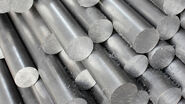标准相关的挑战
多种变化的标准
对国际/区域的钢铁/钢材组件和产品供应商而言,他们的用户经常要求产品需满足多种钢材质量标准。
由于标准“格局”一直在不断变化,而且不同的标准从来都不是完全对等,因此对供应商而言,单批次产品满足多种不同标准的要求是一项难度不小的挑战。用户会要求供应商对钢铁或组件/产品批次报告不同的评级结果。评级结果依照不同标准中规定的不同分析方法获得。为此,供应商必须按照多种标准下的不同方法分析、再分析钢材样本,或者开发一种系统、可靠的方法来比较通过不同甚至是过期标准获得的结果[13-14]。除此之外,他们还要想办法以一种清晰易懂的方法报告通过不同标准获得的结果。图2说明了由于需要满足多种不断变化的钢材质量标准,整个夹杂物评级工作流变得日益复杂。
References
- D. Diez, J. DeRose, T. Locherer, Rate the Quality of Your Steel: Free Webinar and Report: Overview of standard analysis methods and practical solutions for evaluating steel inclusions, Science Lab (2019) Leica Microsystems
- ASTM E1122-96 (2002), Withdrawn 2006, Standard Practice for Obtaining JK Inclusion Ratings Using Automatic Image Analysis, ASTM International (American Section of the International Association for Testing Materials)
- ASTM E45 - 13, Standard Test Methods for Determining the Inclusion Content of Steel, ASTM International (American Section of the International Association for Testing Materials)
- DIN 50602, Withdrawn 2010,Metallographic examination; microscopic examination of special steels using standard diagrams to assess the content of non-metallic inclusions, DIN (Deutsche Institut für Normung)
- NF A04-106 September 1984, Withdrawn 2010, Iron and steel: Methods of determination of the non-metallic inclusion content of wrought steels, Part 2: micrographic method using standards diagrams, AFNOR (Association Française de Normalisation)
- EN 10247:2017, Micrographic examination of the non-metallic inclusion content of steels using standard pictures, CEN (European Committee for Standardization)
- SS 111116 : 2016, Jernkontoret’s inclusion chart II for quantitative assessment of the content of non-metallic inclusions in metals and alloys, SIS (Swedish Standards Institute)
- ISO 4967:2013, Steel - Determination of content of non-metallic inclusions - Micrographic method using standard diagrams, International Organization for Standardization
- ASTM E1245 - 03 (2016), Standard Practice for Determining the Inclusion or Second-Phase Constituent Content of Metals by Automatic Image Analysis, ASTM International (American Section of the International Association for Testing Materials)
- ASTM E2142 - 08 (2015), Standard Test Methods for Rating and Classifying Inclusions in Steel Using the Scanning Electron Microscope, ASTM International (American Section of the International Association for Testing Materials)
- ASTM E2283 - 08 (2014), Standard Practice for Extreme Value Analysis of Nonmetallic Inclusions in Steel and Other Microstructural Features, ASTM International (American Section of the International Association for Testing Materials)
- ASTM E768 - 99 (2010) e1, Standard Guide for Preparing and Evaluating Specimens for Automatic Inclusion Assessment of Steel, ASTM International (American Section of the International Association for Testing Materials)
- Handbook of Comparative World Steel Standards, ASTM DS67B, 5th Edition, John E. Bringas, Ed. (ASTM International, 2004)
- Stahlschlüssel - Key to Steel, 25th Edition (Verlag Stahlschlüssel Wegst, 2019)







